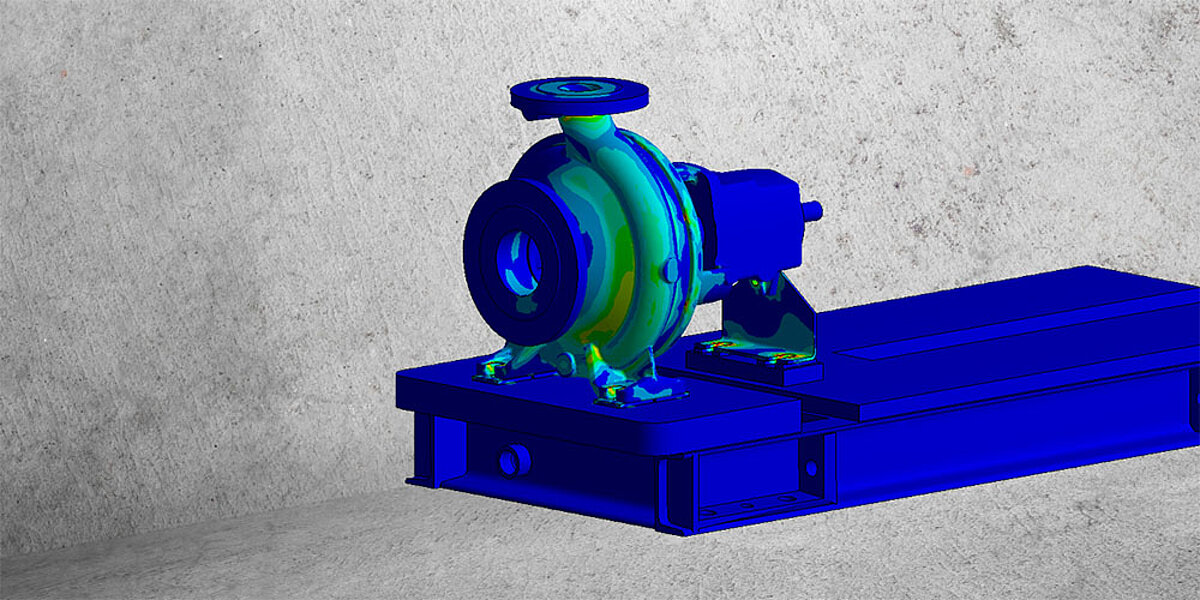Pressure tank

Detectability
The mathematical verification is often carried out in accordance with the AD data sheets. Simple analytical methods or simplified FEM calculations are often sufficient for the calculation.

The Pressure Equipment Directive (PED) defines the following pressure equipment:
Vessels, piping, equipment with a safety function and pressure-retaining equipment. Pressure equipment also includes any elements that may be attached to pressure-bearing parts, such as flanges, nozzles, couplings, support elements, lifting eyes, etc.
For a more detailed explanation of pressure vessels and their areas of application, please refer to the following terms.
Container
A closed component designed and constructed to contain pressurized fluids, including directly attached parts up to the device for connection to other equipment. A vessel may have several pressure compartments.
Pipeline
Piping components intended for the passage of fluids and connected together for installation in a pressure system. Piping includes, in particular, pipes or pipe systems, pipe fittings, equipment parts, expansion pieces, hose lines or, where applicable, other pressure-retaining parts. Heat exchangers made of tubes for cooling or heating air are considered equivalent to piping.
Equipment with safety function
Devices designed to protect the pressure equipment in the event that the allowable limits are exceeded. These devices include:
- Devices designed to limit pressure directly, such as safety valves, rupture disc guards, buckling bars, controlled safety devices (CSPRS).
- Limiting devices that either initiate corrective devices or cause shutdown or shutdown and lockout such as pressure, temperature, or fluid level switches, and measurement and control protective devices (SRMCR).
Pressure retaining equipment
Devices with an operating function that have a pressurized housing.
Assemblies
Multiple pressure devices connected by a manufacturer to form a coherent functional unit.
Pressure vessel calculation at Merkle & Partner
Merkle & Partner's focus is on the calculation of more complex vessels that can no longer be calculated using the simplified approaches. The analysis is based on finite element models of arbitrary geometry. The verification can also be carried out with nonlinear behavior, plasticity of the material, inhomogeneous temperature, etc..
An evaluation of the resulting deformations and stresses can be performed according to all common norms and standards (AD2000, ASME, KTA, EuroCode, etc. ).
- Thermal shock caused by extremely cold or hot media (liquid gas, coolant, etc.)
- earthquake or explosion pressure wave
- dynamic flange loading from pressure surges
- time-varying (transient) pressure/temperature load affecting the operational strength of the component
- An evaluation of the resulting deformations and stresses can be performed according to all common norms and standards (AD2000, ASME Sec. III + VIII, KTA, DIN EN 13445, etc.).
Calculation by means of the finite element method (FEM) helps our customers to save time and costs and can provide indications of possible weak points and optimization potential already during development.
Flow simulation for pressure vessels
- steady / unsteady flows
- laminar / turbulent flows
- incompressible / compressible flows
- flows with (coupled) heat transfer
- flows with chemical reactions (incl. combustion)
- multiphase flows
Strukturanalyse und Optimierung bei Druckbehältern
Optimization goals
- Reduce weight
- Minimize material costs
- Reduce assembly costs
- Suitability of alternative materials
- Optimization strategies
Topology optimization
- Design of Experiments (DoE)
- Behavioural Modeling Extension (BMX)
- Design optimization
Norms and Standards
- AD-2000
- ASME Sec. 8 Div. 1+2
- ASME Sec. 3
- EN 13445
- EN 1591
- PD 5500
- TEMA
- KTA
- RCC-M
Proof and operational stability
Time-dependent pressure and temperature differences result in changing loads on the structure and thus the need for fatigue analysis.
For existing components, we support you in the damage analysis with crack propagation calculations, among other things.
Detailed structural verifications:
- Load capacity verification (TN)
- Creep strength verification (KFN)
- Creep strain check (KDN)
- Proof of ingrowth (EN)
- Stability check (SN)
- Stability check (SE)
- Creep fatigue and cyclic fatigue (KEN)
Areas of application for pressure vessels
- Storage tanks of the oil and gas industry
- Creep resistance compressed air tank certificate (KFN)
- Tank trailers and containers
- Pressure storage tanks
- Heat exchangers
- Process vessels and apparatus (e.g. columns)
- Heated / cooled vessels as part of a plant
- separators / collectors / filters
- pumps